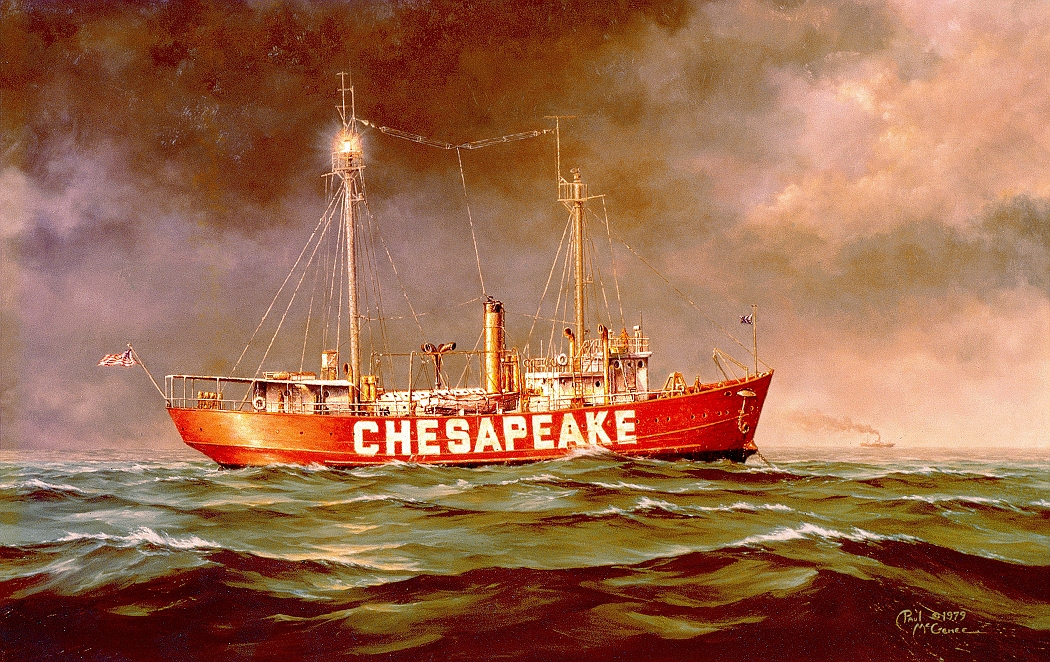|
"Lightship
"Chesapeake" On Station" by Paul McGehee. The "Chesapeake" lightship
was the floating beacon which marked the entrance to the Chesapeake Bay
for many years. Built in 1930 as "Lightship 116" of the U.S. Lighthouse
Service, she first served as the light for Fenwick Island Shoal on the
coast of Delaware. From 1933 until the beginning of World War II she
began her long career on the Chesapeake Bay. When the United States
went to war in 1941 most coastal lightships were withdrawn for security
reasons and were converted for wartime duties. During 1942-45
"Lightship 116" was painted gray, armed with two 20mm cannons, and used
as a patrol vessel near the entrance to the Cape Cod Canal. In 1945,
"Lightship 116" returned to the waters off Cape Henry, Virginia where
her bright red hull, beacon light and "Chesapeake" station designation
guided maritime traffic in and out of the Chesapeake Bay for the next
20 years. In 1965 the Lightship "Chesapeake" was replaced by an
automated beacon. Her final days of service saw her at the mouth of the
Delaware Bay, serving there until 1970. In 1971 "Lightship 116" (then
in retirement) was acquired by the National Park Service. Since 1982,
the ship has been part of the Baltimore Maritime Museum in the Inner
Harbor of that Maryland port, where you can visit her and walk her
decks. As one of the few surviving lightships, she is truly a piece of
maritime history. "Lightship "Chesapeake" On Station" is faithfully
reproduced as an archival-quality print from
McGehee's original oil painting, each hand-signed by the artist.
|


